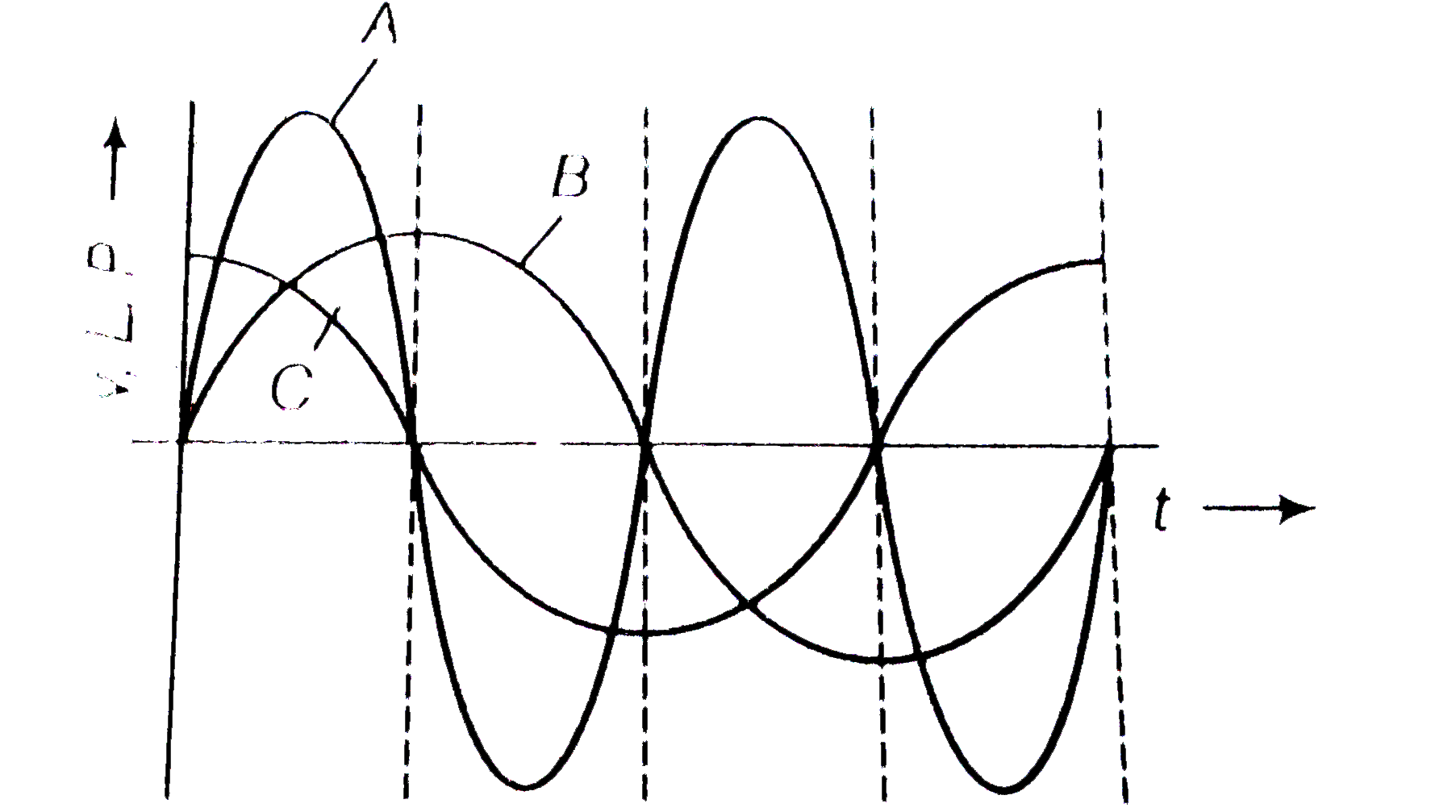Explain why the reactance provided by a capacitor to an alternating current decreases with increasing frequency.
The correct Answer is:A
A capacitor does not flow of direct current through it as the resistance across the gap is infinite. When an alternating voltage is applied across the capacitor plates, the plates are alternatively charged and discharged. The current through the capacitor is a result of this changing voltage (or charge).
Thus, a capacitor will pass more current through it if the voltage is changing at a faster rate, i.e., if the frequency of supply is higher. This implies that the reactance offered by a capacitor is less with increasing frequency.
Mathematically, the reactance can be written as XC=1ωC
Topper's Solved these Questions
- ALTERNATING CURRENTBOOK - NCERT EXEMPLAR ENGLISHCHAPTER - ALTERNATING CURRENTEXERCISE - Short Answer types questions
1 Video
- ALTERNATING CURRENTBOOK - NCERT EXEMPLAR ENGLISHCHAPTER - ALTERNATING CURRENTEXERCISE - Long Answe types Questions
5 Videos
- ALTERNATING CURRENTBOOK - NCERT EXEMPLAR ENGLISHCHAPTER - ALTERNATING CURRENTEXERCISE - Long Answe types Questions
5 Videos
- ATOMSBOOK - NCERT EXEMPLAR ENGLISHCHAPTER - ATOMSEXERCISE - Long Answer Type
6 Videos
Similar Questions
A device 'X' is connected to an AC source. The variation of voltage, current and power in one complete cycle is shown in figure.
a) Which curve shows power consumption over a full cycle?
b) What is the average power consumption over a cycle?
c) Identify the device X.

View SolutionAn electrical device draws 2 kW power form AC mains [voltage 223 V (rms) =√50,000V]. The current differs (lags) in phase by ϕ(tan=−34) as compared to voltage. Find (i) R, (ii) XC−XL, and (iii) IM. Another device has twice the values for R, XC and XL. How are the answers affected ?
View SolutionAn electrical device draws 2 kW power form AC mains [voltage 223 V (rms) =√50,000V]. The current differs (lags) in phase by ϕ(tan=−34) as compared to voltage. Find (i) R, (ii) XC−XL, and (iii) IM. Another device has twice the values for R, XC and XL. How are the answers affected ?
View SolutionThe first four spectral lines in the Lyman series of a H-atom are λ=1218Å,1028Å,974.3Åand951.4Å. If instead of Hydrogen, we consider Deuterium, calculate the shift in the wavelength of these lines.
View SolutionExplain why the reactance provided by a capacitor to an alternating current decreases with increasing frequency.
View SolutionExplain why the reactance offered by an inductor increases with increasing frequency of an alternaitng voltage.
View SolutionHow will be inductive reactance and capacitive reactance change on decreasing the frequency of alternating current to zero from an initial value?
View Solutionप्रत्यावर्ती धारा परिपथ में आवृत्ति बढ़ाने पर प्रेरणिक प्रतिघात तथा धारितीय प्रतिघात पर क्या प्रभाव पड़ता है ?
View Solution50 हर्ट्स आवृत्ति वाली प्रत्यावर्ती धारा के 50 माइक्रोफैरड धारिता वाले संधारित्र का प्रतिघात ज्ञात कीजिए।
View Solutionएक परिवर्त्ती प्रत्यावर्ती धारा स्त्रोत एक संधारित्र से जुड़ा है क्या विस्थापन धारा में वृद्धि अथवा कमी प्रत्यावर्ती धारा की आवृत्ति कम कर देगी
View Solutionस्पष्ट कीजिए कि संधारित्र द्वारा प्रदत्त प्रतिघात प्रत्यावर्ती धारा की आवृत्ति में वृद्धि करने पर कम क्यों हो जाता है?
View SolutionExplain why the reactance offered by an inductor increases with increasing frequency of an alternaitng voltage.
View SolutionExplain why the reactance offered by an inductor increases with increasing frequency of an alternating voltage.
View SolutionExplain why the reactance offered by a capacitor decreases with increasing frequency of an alternating voltage
View SolutionExplain why the reactance provided by a capacitor to an alternating current decreases with increasing frequency.
View Solution

